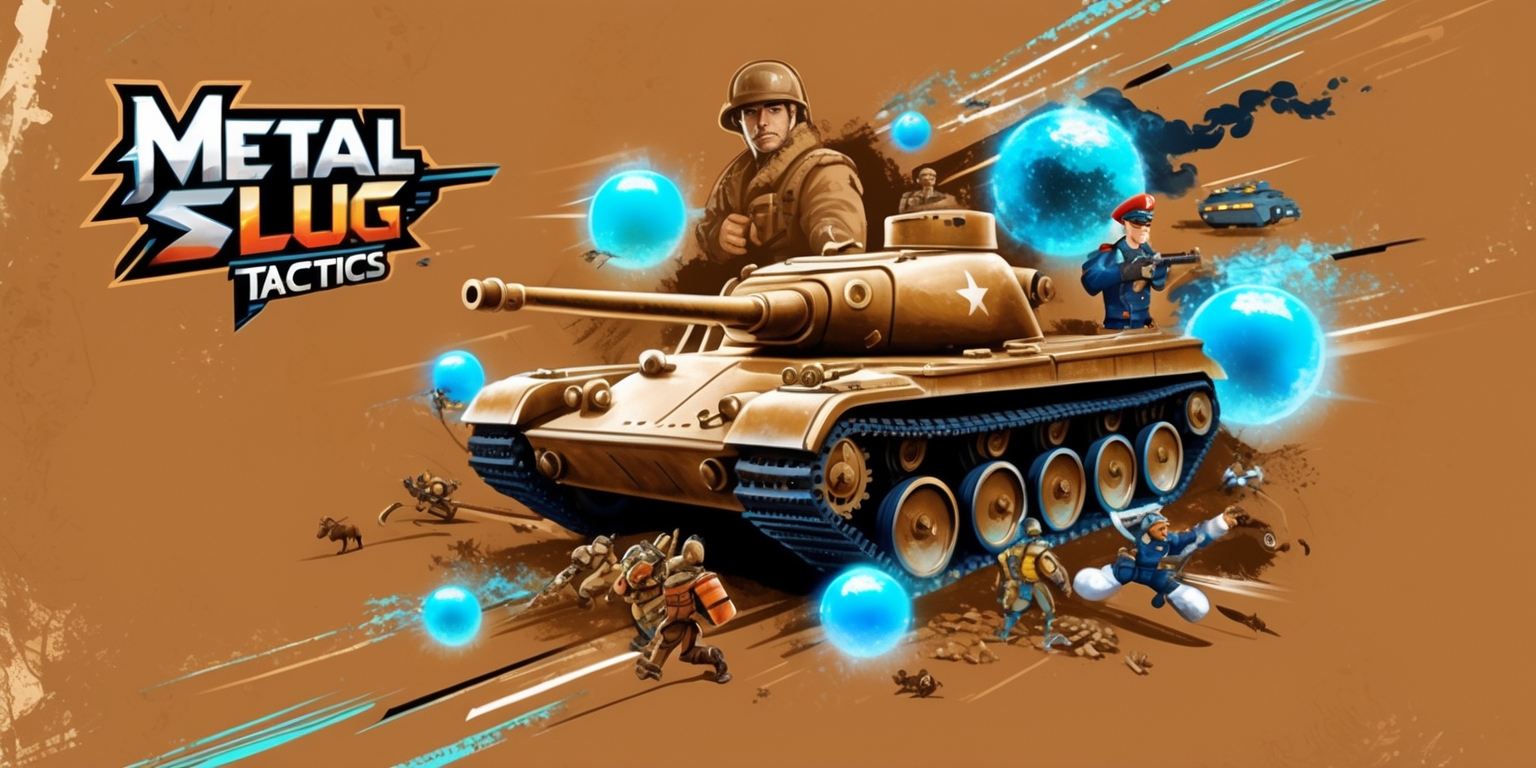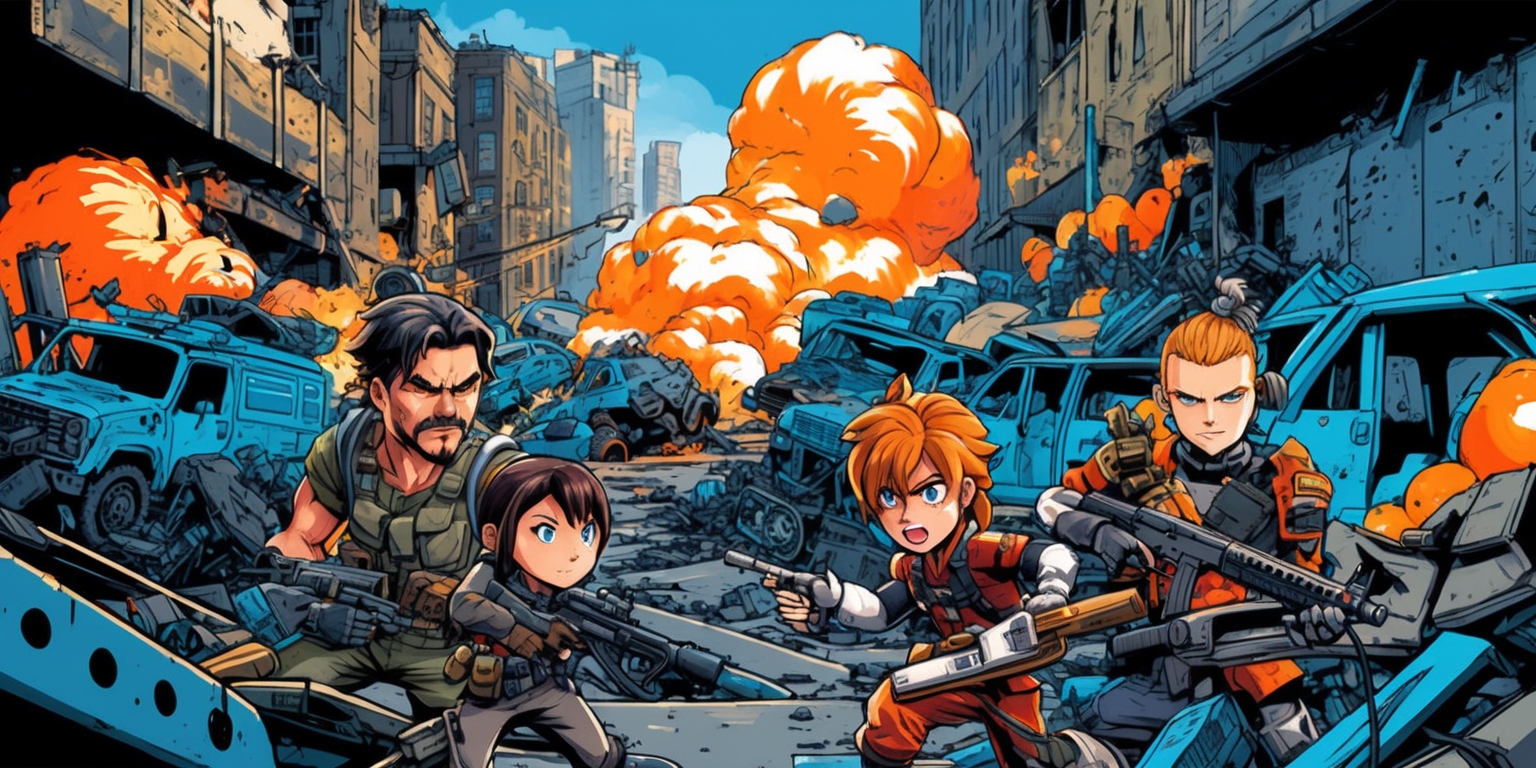Crafting Strategy and Nostalgia: A Deep Dive into Metal Slug Tactics
- 1079

Fans of the beloved Metal Slug franchise can rejoice as it ventures into new territory with the latest installment, presenting an enticing blend of nostalgic humor and tactical gameplay. Departing from its traditional sidescrolling roots, Metal Slug Tactics introduces a turn-based strategy experience infused with the series’ distinct charm. As players navigate through a vibrant isometric battlefield, they are met with clever mechanics and a cast of characters that feel true to their origins, albeit with a few hiccups along the way. This review dives deep into the multifaceted aspects of Metal Slug Tactics, exploring what it contributes and in which area it might stumble.
Revamping a Classic
Metal Slug has always stood out due to its unique blend of action and humor, drawing players in with cartoonish villains and over-the-top machinery. Rather than following its contemporaries into darker themes, Metal Slug embraces a playful aesthetic. This new tactical iteration retains that whimsical spirit, ensuring a familiar atmosphere that appeals to long-time fans while welcoming newcomers.
A Shift to Turn-Based Strategy
This installment marks Metal Slug's first foray into turn-based strategy. Unlike previous titles that focused on real-time action and platforming, players now take turns maneuvering their squads on a carefully designed isometric grid. This shift provides a different strategic perspective, requiring thoughtful deployment of troops and resources rather than relying purely on reflexes.
Visuals and Art Style
The pixel art-inspired models align perfectly with the franchise's aesthetic. Each character, from soldiers to the iconic Metal Slug tanks, is artfully rendered, retaining their classic charm while adapting them to a 3D environment. The vibrant landscapes are populated with diverse terrains and intricate details that enhance the excitement of combat.
Sync Attacks: Teamwork Makes the Dream Work

A key highlight of Metal Slug Tactics is the synchronization attack mechanic. This allows players to execute chain attacks when combatants are in the right positioning. Not just a strategic element, sync attacks are a satisfying way to eliminate foes and can lead to exhilarating moments of cooperative carnage as players learn to exploit their surroundings effectively.
The Stakes of Combat
The characters represent more than just cannon fodder; they possess individual strengths and abilities, making each battle a test of tactical proficiency. If an ally falls in combat, players can revive them, incorporating an element of tactical thinking into every choice and ensuring that every mission feels impactful. The provision for revival introduces an engaging risk-reward dynamic that keeps the tension alive during intense encounters.
Diverse Cast of Characters
The game's roster begins with three out of nine heroes, each possessing unique weapons and abilities. Iconic characters such as Marco and Eri return, complemented by crossovers from other series like Ikari Warriors that add some fun surprises. The diversity in character skills encourages experimentation, allowing players to develop strategies that cater to their play style.
Adrenaline and Aggression
Abilities in the game are tied to an adrenaline mechanic that builds as players move across the battlefield. This clever design choice encourages players to take aggressive actions rather than adopt a more cautious approach. The tension ramps up as players strategize not only for mobility but also to unleash devastating special attacks once they've amassed enough adrenaline.
Objectives: Balancing Goals
Each mission presents both primary and secondary objectives, with the completion of the latter yielding additional rewards. While this structure inherently drives players to engage thoroughly with each level, the experience fluctuates based on the quality of mission design. Some tasks are thrilling, while others, like escorting slow-moving characters, can feel tedious.
World Exploration and Decision Making
Navigating through the game's overworld map is reminiscent of classic platforming adventures, providing players with options about which levels to tackle and their respective rewards. The visual cues help streamline decision-making but also add a layer of strategy as players plan their paths to maximize resource acquisition.
Boss Fights: The Ultimate Test
After completing a set of missions, players confront the region's boss, a monumental challenge that combines endurance and skill. These intense encounters often seem daunting but serve as thrilling breaks from regular missions, ensuring players are continuously engaged and entertained.
Challenging Levels and Progression
Clearing missions becomes an accomplishment in itself, especially for the first time. However, once players achieve this initial milestone, the game transitions into a new phase focused on refining individual runs. This layered approach adds depth as players explore the strategic intricacies of their previous successes.
Geographical Repetition
Despite having varying locations, the repetitiveness of some regions can detract from the overall experience. Although each area contains unique enemies and characteristics, repetition may lead to fatigue, particularly since two areas are similarly themed desert environments.
Enemy Design and Representation
Throughout the game, enemy designs occasionally rely on outdated tropes that can be uncomfortable for modern players. While the franchise has a rich history, it is crucial that new entries evolve alongside societal expectations, moving toward more original and respectful representations.
The Role of Randomization
The randomness inherent in each run can make the outcome feel largely dependent on luck rather than strategic planning. While selecting regions provides some autonomy, the reshuffling of level objectives and rewards introduces moments of frustration, especially when players find themselves ill-equipped to meet challenge demands.
Earning Progress: A Balancing Act
While players can earn cash and loadouts during missions, the incremental upgrades feel, at times, insufficient. The emphasis on chance-determined rewards stands in contrast to the streamlined progression systems seen in other roguelikes, where every outcome tangibly contributes to player growth and development.
Final Thoughts: A Solid Yet Flawed Journey
Metal Slug Tactics is a commendable attempt to take a beloved series in a new direction. With its engaging mechanics, artistic visuals, and humor, it builds an exciting turn-based experience. Nevertheless, the game ultimately grapples with reliance on luck for success, alongside outdated design elements that could benefit from a refresh. Despite its flaws, the tactical depth and charm will undoubtedly attract veterans and newcomers as they begin this quirky military adventure.
